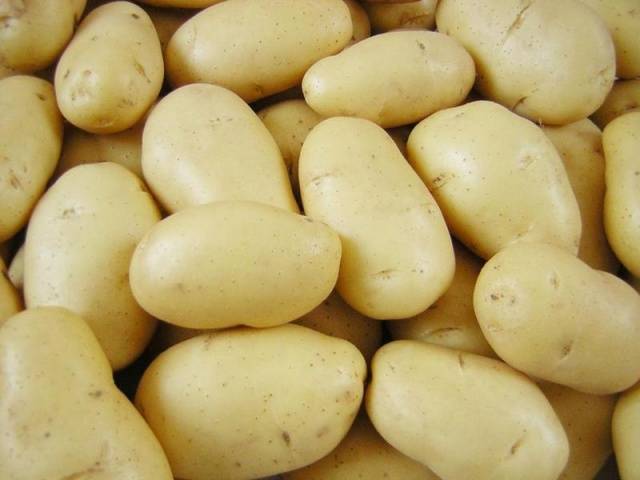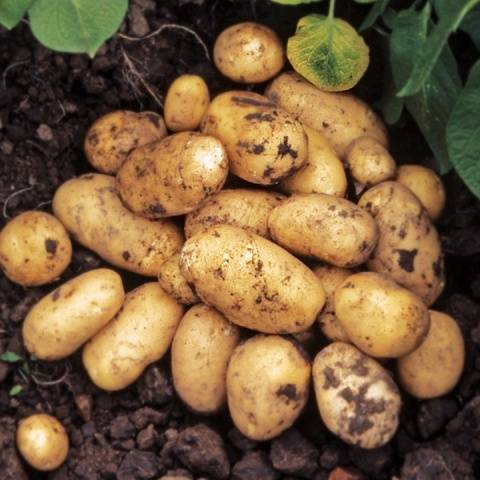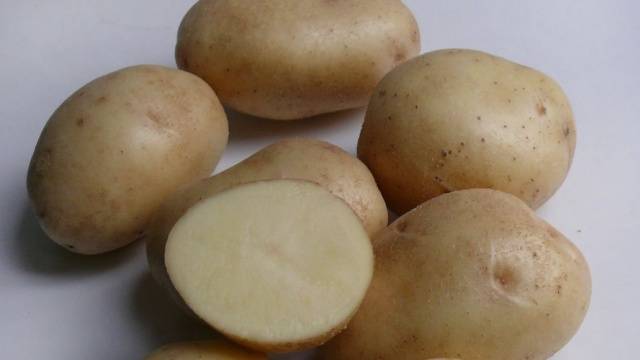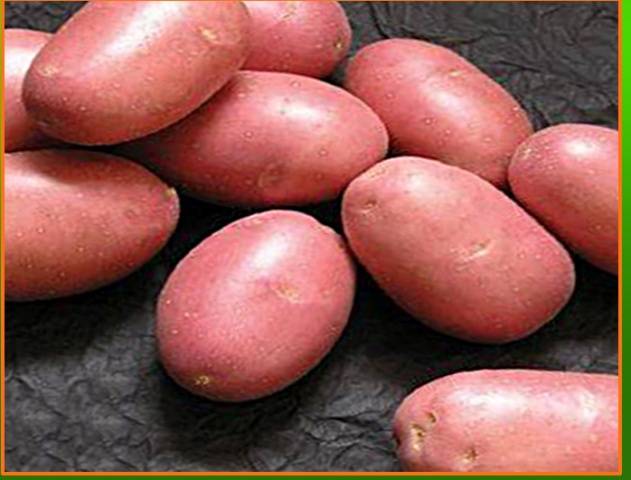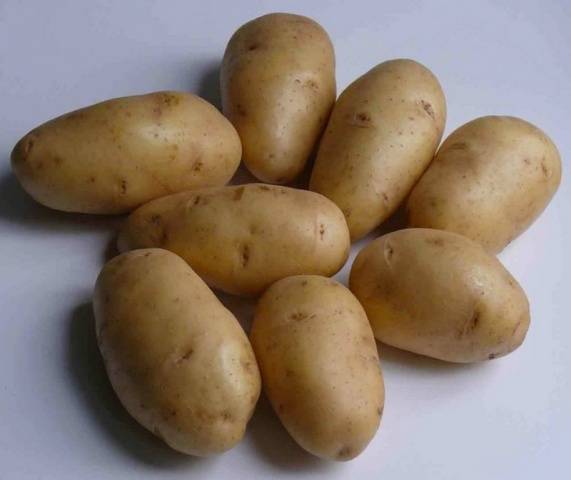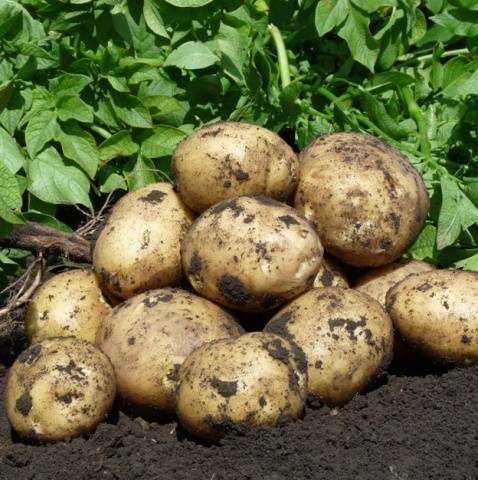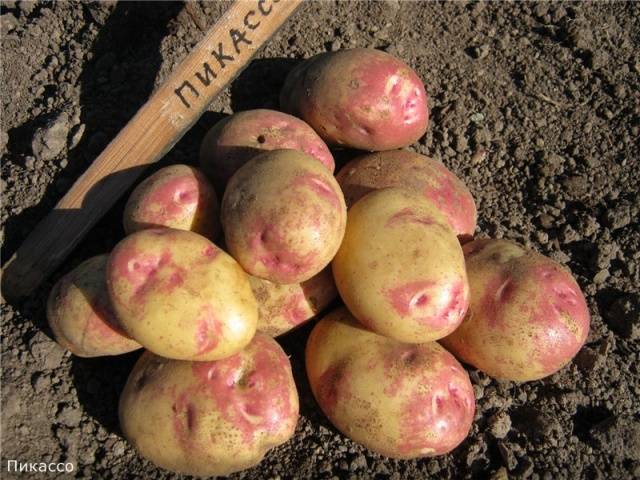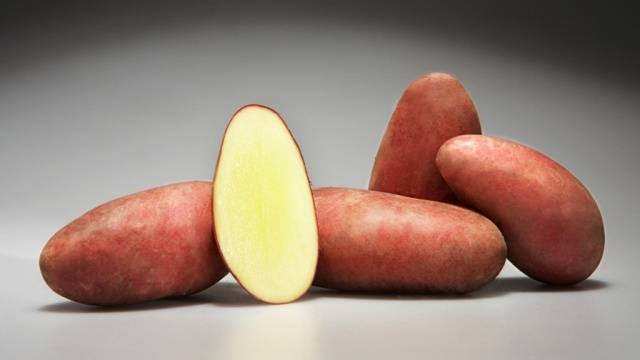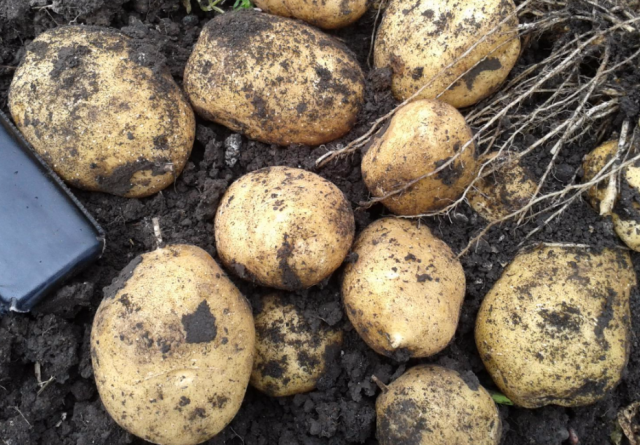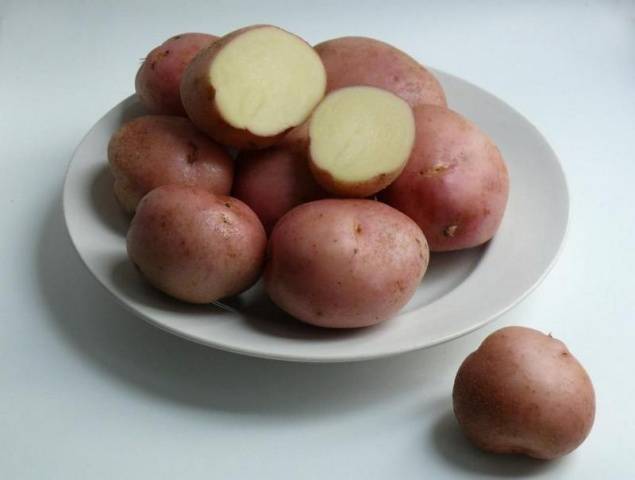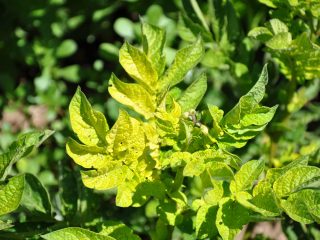Content
Not all the gardens and dacha plots of Russians are distinguished by a large area, most often, the owner has only a couple of hundred square meters at his disposal. When distributing space on this piece of land, gardeners often "forget" about potatoes, since there is hardly enough land for tomatoes, cucumbers and herbs. It is believed that in order to get a good harvest of potatoes, you need to plant several buckets of this root crop, and this amount requires a fairly large area of \ u200b \ u200bthe garden.
In this case, Dutch potatoes will be a real salvation. The yield of this potato is 3-4 times higher than the same indicator of varieties of Russian selection, which means that about 120 kg of root crops can be obtained from one hundred square meters.
Features of Dutch potatoes
Dutch potato varieties are bred for the cool climate of Europe, so they are great for central and southern Russia.
This potato has a number of benefits, including:
- High yield - in a temperate climate, you can get 400-500 centners per hectare, and on the black earth soils of the southern regions of the country, up to 800 centners of Dutch potatoes are harvested from each hectare of fields.
- Resistance to viruses and bacterial diseases - in addition to the standard diseases for potatoes, Dutch varieties have immunity against pathogenic varieties of viruses.
- Late blight can affect the leaves of potatoes, but tubers of most varieties from Holland remain unharmed.
- Root crops of Dutch varieties are almost always very large, even with a smooth skin - the presentation of potatoes at a height.
- The tubers are suitable for preparing any kind of food, they can be stored in cellars and transported over long distances.
Impala
Medium early potatoes, which takes 60 to 70 days to fully mature. Plants are quite powerful, tolerate temperature drops and short-term drought well. The yield of the variety does not strongly depend on the number of warm and cold days; on average, it is about 600 centners per hectare.
The tubers are colored in a light yellow shade, have a beautiful glossy peel, the average mass of potatoes is 120 grams. The pulp is colored yellow. The potatoes retain their shape well even after boiling, but the impala potato puree is excellent as well.
The gardener will find 10 to 20 potatoes in each hole. The crop can be transported, as the tubers are dense and are not afraid of mechanical damage. Potatoes are suitable for long-term storage, even after winter, root crops do not germinate and do not wither.
Bushes and tubers are not infected with nematodes, cancers and scabs. The only thing that potatoes are afraid of is late blight. When the first spots appear on the tops, the roots stop growing, so the bushes must be treated with fungicides in a timely manner so as not to lose the crop.
"Condor"
A mid-season potato variety, which ripens 80-90 days after the first shoots appear. A distinctive feature of potatoes is their excellent taste. This variety is ideal for baking, roasting and mashed potatoes.
The potatoes are very large - the average weight is 140 grams, they have an oval regular shape, the peel is dense, colored in a red tint. And the flesh inside the tuber is yellow.
Potatoes are quite dense, it is difficult to damage them, but they are very convenient to peel, thanks to their large size and smooth peel. Only a few tubers ripen in the holes at the same time, but the yield is still high - up to 350 centners, due to the large mass of root crops.
Plants are susceptible to viruses, scab and late blight, but they are protected from cancer and nematodes. Condor potatoes are not afraid of drought. The tubers may well be stored during the winter.
"Latona"
For lovers of yellow-fruited potatoes, the Dutch variety "Latona" is most suitable. This potato is zoned for the climate of central Russia, the plants tolerate drought, heavy rainfall, temperature fluctuations well.
The tubers are even, oval, colored in a yellow tint. The mass of potatoes is average, but sometimes specimens over 140 grams come across. Therefore, it is often possible to collect up to 2.5 kg of root crops from one hole. The total yield of the variety is 500 centners per hectare of land.
The technical maturity of potatoes occurs on the 75-85th day after planting. If you want to feast on young potatoes, you can do this within 45 days after laying the tubers for planting.
The bushes are resistant to nematodes, scab and dry rot. The only thing is that you need to inspect the tops for late blight infection.
Red Scarlett
The early ripening variety is recognized by many gardeners as one of the best Dutch hybrids. Full ripening of potatoes will occur 75 days after planting, and undermine the young tubers can be done after 45 days.
Potato variety "Red Scarlett" is known for its vitality and unpretentiousness: even with irregular care, bad weather, rare watering and other natural disasters, the potato yield will be consistently high and will certainly delight the owner.
The roots are pink, the flesh of the potato is yellow, so it remains after boiling. The tubers boil well and have a very pleasant taste. The peel is dense, has a small number of eyes, and is not afraid of mechanical damage.
The yield reaches 500 centners with an average weight of 120 grams of tubers. Potatoes can be transported, they are also suitable for long-term storage.
Another huge plus of the Red Scarlett variety is its resistance to viruses and diseases. This potato almost never gets sick.
"Ukama"
Ultra-early potato, ripening within 50-60 days after planting. The variety is distinguished by its large tubers, the average weight of which is 170 grams.
Potatoes are of the correct elongated shape, painted in a yellow tint, the same color and the flesh of the tubers. When boiled, the potatoes become soft, homogeneous, and very tasty.
Potatoes are well seasoned against cancer and nematodes, they are not afraid of scab and leaf curling. The only disadvantage of the Ukama variety is that it does not cope well with drought and high temperatures. Therefore, in too hot seasons, the bushes will have to be watered often in order to get a yield of 350 centners per hectare.
This potato has the ability to "tighten" its own "wounds"; damaged fruits do not rot or wither.
"Sante"
The variety belongs to table varieties of potatoes, excellent chips or fries are obtained from root crops. This is due to the low starch content in root crops - at the level of 12%.
Potatoes ripen on average - from 80 to 90 days. The tubers have the correct oval shape, are painted in a yellow tint, a fairly large number of eyes can be seen on the peel.
The hybrid has a high yield and a large mass of root crops. In view of this, it is necessary to plant potatoes with respect to large distances between the holes. The variety is considered one of the most protected against all "potato" diseases.
"Picasso"
This potato from Holland is one of the few mid-late varieties that have become widespread in Russia. A distinctive feature of the variety is excellent keeping quality and good taste, high nutritional value.
The bushes are tall, bloom profusely and produce good yields. The tubers are yellow, elongated, and have characteristic pink spots on the peel.
The harvest of "Picasso" is consistently high, this potato is not afraid of drought, disease and viruses, or late blight of tops and root crops. However, gardeners should remember that Dutch potato varieties do not like scarce soils - the land on the site should be fertilized regularly.
"Desiree"
Another medium late potatowhich can be used for long-term storage.
The bushes are also powerful and tall. Potatoes are large enough, oval, colored in a pink tint, their flesh is yellow. The starch content is high (up to 21%), which makes it possible to use root vegetables for mashed potatoes, and for frying, and for soups.
The taste of the tubers is excellent; chips are often made from them.
Unlike previous varieties, Desiree potatoes are not very immune to viruses and diseases. But the variety pleases with a stable high yield and excellent commercial characteristics.
"Jarla"
Early maturing potatoes with excellent taste characteristics. Bushes are powerful and spreading, bloom with white inflorescences.
The tubers are oval-rounded, colored in a light yellow tint, there are few eyes. The mass of potatoes in one hole can vary significantly - from 80 to 300 grams.
Potatoes are considered very unpretentious:
- not afraid of drought and heat;
- can recover from returnable spring frosts;
- grows on soils of any composition and nutritional value;
- does not become infected with late blight, rock and scab;
- gives consistently high yields.
The Jarla variety is very reliable - the gardener can be sure of the harvest even under bad conditions. cultivation.
"Romano"
Another potato variety that is able to please with high yields even under unfavorable circumstances, such as a bad climate, drought, and poor soil.
Potatoes ripen in medium terms. Tubers are rounded, pale pink in color, with snow-white flesh, rather large in size. Up to 9 potatoes can form in each hole.
Plants are resistant to several viruses, late blight, nematodes and scab. Root crops are well stored during the winter, do not germinate even at elevated storage temperatures.
findings
Regardless of which Dutch potato variety is chosen for growing on your own plot, you need to remember some of the requirements of foreign hybrids:
- potatoes from Holland love chernozem, nutritious soils, so the scarce land needs to be fertilized regularly;
- you should not plant potatoes in one place for more than three seasons in a row - expecting high yields in this case is pointless;
- watering large-fruited potatoes is rare, but abundant;
- it is impractical to use the harvested harvest of Dutch hybrids for planting next season - the yield will be low, and the tubers will be small.
Observing all the rules, it is quite possible to collect a dozen bags of elite potatoes from a small summer cottage.
